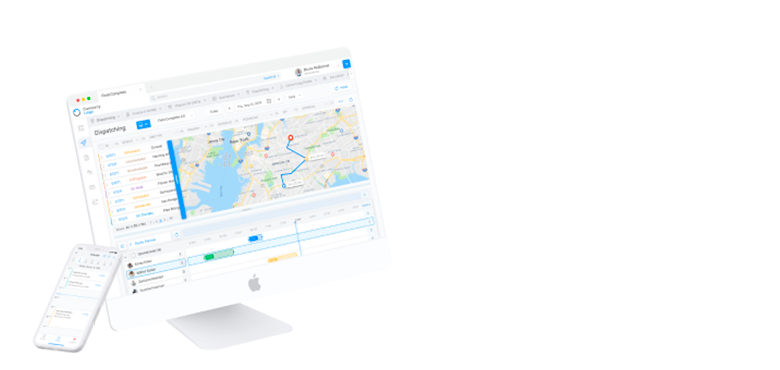Overview
Creating a price list for house cleaning services can feel overwhelming, especially when considering factors like:
- Location
- Type of assistance
- Property size
- Frequency of service
- Market demand
These elements not only shape the pricing but also influence how customers perceive the value of the services offered. It’s essential to recognize that a thoughtfully crafted price list does more than just reflect costs; it plays a crucial role in enhancing customer satisfaction and fostering loyalty. By addressing these considerations with care, service providers can create a pricing strategy that resonates with their clients, ultimately leading to a more fulfilling and successful business experience.
Introduction
In the competitive landscape of house cleaning services, many providers face the daunting challenge of establishing an effective pricing strategy. This task can feel overwhelming, as numerous factors—from geographic location and service type to property size and market demand—complicate the pricing environment. It’s important to recognize how these complexities can impact not only the business’s success but also the satisfaction of potential clients.
This article aims to guide cleaning service providers through the essential considerations for crafting a price list that truly reflects the value of the services offered while appealing to clients. By exploring various pricing models and providing practical steps for calculating and presenting prices, we hope to equip you with the tools needed to enhance customer satisfaction and drive profitability. Together, let’s navigate this intricate landscape with confidence and care.
Identify Key Factors Influencing Pricing
Creating an effective price list for house cleaning can be a daunting task, especially when considering the various factors that influence your pricing strategy. It’s essential to approach this challenge with empathy and understanding, recognizing the complexities involved.
- Location is a significant factor that can weigh heavily on your pricing decisions. Urban areas often command higher rates due to increased demand and a higher cost of living. For instance, sanitation offerings in these regions can range from $40 to $100 per hour for each professional worker. This illustrates how location impacts the price list for house cleaning, making it crucial to consider this when setting your prices.
- Type of Assistance also plays a vital role. Different sanitization options—such as standard upkeep, intensive scrubbing, and move-in/move-out maintenance—require distinct cost structures. Each type varies in time and resource requirements, which directly affects overall costs. Distinguishing between deep sanitation and routine maintenance is essential, as it clarifies the various cost structures associated with these services, which helps in developing a price list for house cleaning to effectively meet your clients’ needs.
- The size of the property is another key consideration. The square footage of a home directly affects the price list for house cleaning, as it correlates with the time and effort needed for cleaning. Larger properties typically incur higher costs due to the extensive labor and resources required. As Chris Mondragon insightfully points out, “Most people don’t know the square footage of their house. A complimentary assessment allows you to inspect the property and removes the risk of undervaluing with a fixed rate.” This highlights the significance of precise estimates in costs. Utilizing Field Complete’s software can streamline this process, allowing contractors to provide accurate estimates efficiently.
- Frequency of Assistance can also influence pricing. According to the price list for house cleaning, regular clients often benefit from discounts on recurring tasks, while one-time deep cleans may be priced at a premium due to their intensive nature. Field Complete’s user-friendly platform can assist in managing these recurring schedules effortlessly, facilitating the tracking and adjustment of costs as needed.
- Lastly, understanding market demand is crucial. Staying updated on local market trends and competitor costs is essential for positioning your offerings effectively. Recognizing how these elements interact can help you develop a competitive cost strategy that reflects the true value of your services, which includes creating a price list for house cleaning. Furthermore, findings from a case study on cleaning options for commercial properties suggest that routine cleaning can enhance attractiveness and worth, which may also guide your cost strategies for residential options.
By thoroughly examining these components and leveraging Field Complete’s extensive field management software—designed to streamline scheduling, estimating, and payment collection—you can create a cost strategy that not only meets market expectations but also enhances customer satisfaction and loyalty. Discover the transformative potential of Field Complete by trying it for free today, and see how it can revolutionize your cost management process!
Choose an Appropriate Pricing Model
Selecting the right pricing model, such as a price list for house cleaning, for your maintenance offerings is crucial for your success and the satisfaction of your clients. Many contractors grapple with this decision, which can lead to confusion and uncertainty. Here are some common models in the industry that can help clarify your choices:
- Hourly Rate: This model bills customers based on the time spent on the task, offering flexibility for various job scales and making it easy for customers to understand.
- Flat Rate: A predetermined price is set for specific tasks, such as a standard cleaning of a certain size residence. This approach simplifies billing, providing clarity for customers.
- Per Room Charges: Charges are based on the number of rooms cleaned, allowing customers to customize their selections according to their needs.
- Square Footage Charges: Costs are calculated based on the total area of the home, making it particularly suitable for larger properties and ensuring a transparent pricing structure.
As we look ahead to 2025, it’s heartening to see many cleaning businesses adopting these models to enhance customer satisfaction and operational efficiency. For instance, ZenMaid’s implementation of an instant booking form has remarkably simplified the pricing process, alleviating cost-related stress for businesses and improving customer experiences. This tool not only streamlines the booking procedure but also supports the development of effective cost strategies.
Additionally, offering a small discount of around 5% for bi-weekly cleanings can encourage customers to commit to regular services, representing a thoughtful approach to cost management that aligns with industry trends. Christine Hodge, the owner of Clearview Washing, noted that they raised their rates by 15% this year to encourage clients to save their credit card information for auto-charging, highlighting the importance of adjusting prices in response to operational expenses.
When evaluating your target audience and the services you provide, consider which pricing structure aligns best with your business objectives and customer expectations. Experts suggest that understanding the typical hourly rates for maintenance services in your area can significantly inform your price list for house cleaning, helping you remain competitive in the market. Furthermore, utilizing complimentary estimate templates can aid in creating professional-looking estimates, adding value to your pricing approach. Finally, as same-day home maintenance options become more prevalent, staying attuned to current trends can influence your pricing structures and client expectations.
Calculate Prices Based on Services Offered
Choosing your pricing model is just the first step; now, it’s essential to determine the rates in your price list for house cleaning that reflect the valuable offerings you provide. Let’s explore how you can navigate this process with care:
- List Your Offerings: Begin by creating a comprehensive list of all the sanitation options you offer, such as standard upkeep, deep sanitation, and specialized services like carpet maintenance.
- Determine Your Costs: It’s crucial to calculate the costs associated with each offering, including labor, cleaning supplies, and overhead expenses. This understanding will help you grasp your minimum cost threshold.
- Set Your Profit Margin: Think about a profit margin that aligns with your business goals. A common approach is to add a percentage—typically between 20-30%—to your total costs to establish your selling price.
- Evaluate Market Rates: Take the time to investigate what competitors charge for similar offerings in your area. This research will help ensure your price list for house cleaning remains competitive while still covering your costs.
- Adjust for Complexity: If certain offerings require extra time or specialized skills, it’s important to adjust your charges to reflect the added value you bring.
By following these steps, you can create a cost structure that is both competitive and profitable. Additionally, utilizing Field Complete’s cleaning business software can greatly simplify your scheduling, job management, and invoicing tasks. This tool not only facilitates better management of your costs but also supports you in focusing on what truly matters—growing your business. With features like automated invoicing and detailed reporting, along with seamless integration with QuickBooks, you can maintain organized financial records while alleviating the stress of accounting. Remember, you’re not alone in this journey; there are tools available to help you thrive.
Format and Present Your Price List Clearly
After calculating your prices, you may find that the final step—formatting and presenting your price list—can feel overwhelming. However, with a few thoughtful strategies, you can create a clear and inviting presentation that resonates with your customers.
- Use a Clean Layout: It’s essential to organize your price list in a simple, easy-to-read format. By utilizing headings and bullet points, you can clearly distinguish various offerings and cost structures, making it easier for your customers to navigate.
- Add Descriptions: Providing concise explanations for each offering can significantly assist customers in understanding what they are investing in. This not only enhances the value of your services but also brings clarity to your offerings.
- Highlight Discounts: If you offer discounts for recurring services or package deals, make sure these are prominently featured. Clear emphasis on these options can motivate customers to choose them, fostering a sense of appreciation for their loyalty.
- Utilize Visuals: Consider incorporating visuals or templates to enhance the attractiveness of your price list. Tools like Canva or Venngage can help you create professional-looking documents that capture attention and convey professionalism.
- Make it Accessible: Ensuring your price list is easily accessible—whether on your website, in brochures, or as a downloadable PDF—can significantly increase the likelihood that prospective customers will engage with your services.
Moreover, you may find that incorporating your pricing structure with Field Complete can greatly streamline your pricing process. Field Complete not only simplifies scheduling, estimating, and payment collection but also enhances your accounting processes, especially if you use Quickbooks. By following these formatting tips and leveraging the capabilities of Field Complete, you can create a price list that not only informs but also attracts clients, ultimately contributing to your business’s success. Don’t forget to try it FREE to see how it can transform your business management!
Conclusion
Establishing an effective pricing strategy for house cleaning services can feel daunting, especially in a competitive market. By recognizing key factors such as:
- Location
- Service type
- Property size
- Frequency of service
- Market demand
cleaning service providers can thoughtfully tailor their pricing to better align with client expectations. This understanding not only aids in crafting a competitive price list but also nurtures customer satisfaction and loyalty.
Choosing the appropriate pricing model is crucial for success. Whether selecting:
- Hourly rates
- Flat fees
- Pricing based on room count or square footage
each model presents unique advantages that can resonate with specific business goals and client needs. Moreover, calculating prices through a comprehensive understanding of service costs, profit margins, and market rates ensures that pricing remains both competitive and profitable, providing peace of mind to service providers.
Presenting a clear and well-formatted price list can significantly influence client perception and decision-making. By utilizing a clean layout, incorporating service descriptions, highlighting discounts, and ensuring accessibility, cleaning service providers can effectively communicate their value to potential clients. Additionally, integrating tools like Field Complete can streamline operations, making it easier to manage pricing and enhance overall business efficiency.
Navigating the complexities of pricing for house cleaning services requires a strategic approach that harmonizes market demands with operational realities. By leveraging the insights and tools discussed, cleaning service providers can cultivate a pricing strategy that not only reflects the value of their services but also fosters enduring relationships with clients, ultimately driving business growth and success.
Frequently Asked Questions
What factors influence the pricing strategy for house cleaning services?
The main factors influencing pricing include location, type of assistance, size of the property, frequency of assistance, and market demand.
How does location affect house cleaning prices?
Location significantly impacts pricing, with urban areas often commanding higher rates due to increased demand and a higher cost of living. Rates can range from $40 to $100 per hour for each professional worker in these regions.
What types of assistance are available for house cleaning, and how do they affect pricing?
Different types of assistance include standard upkeep, intensive scrubbing, and move-in/move-out maintenance. Each type has distinct cost structures based on the time and resources required, impacting the overall pricing.
How does the size of the property influence cleaning costs?
The square footage of a home affects cleaning costs, as larger properties require more time and effort to clean. Accurate assessments are important for pricing, as they help avoid undervaluing services.
Does the frequency of cleaning services impact pricing?
Yes, regular clients often receive discounts on recurring cleaning tasks, while one-time deep cleans may be priced at a premium due to their intensive nature.
Why is understanding market demand important for pricing house cleaning services?
Staying updated on local market trends and competitor costs helps in positioning your services effectively. This knowledge aids in developing a competitive pricing strategy that reflects the true value of your offerings.
How can Field Complete’s software assist in managing house cleaning pricing?
Field Complete’s software streamlines scheduling, estimating, and payment collection, allowing contractors to provide accurate estimates and manage recurring schedules efficiently, which enhances customer satisfaction and loyalty.
List of Sources
- Identify Key Factors Influencing Pricing
- Top Tips for Understanding Cleaning Services Pricing in 2024 (https://babcockcleaning.services/pricing?srsltid=AfmBOorJ8sO9xsWR_40bbsMfWIpq3SlsM98c_8qZLsS1VulW60Z34y09)
- upflip.com (https://upflip.com/blog/house-cleaning-pricing-guide)
- House Cleaning Archives | TruCleans (https://trucleans.com/category/house-cleaning)
- Home (https://babcockcleaning.services/ultimate-guide-to-pricing-house-cleaning-rates-tips-and-budget-strategies-for-2024?srsltid=AfmBOorcSN8vkDb8178IGK3n7X1fCrJnYI_zLFbqPaSNu3x_UmkbgV_a)
- Choose an Appropriate Pricing Model
- Reasonable House Cleaning Prices – Tips & Benefits | Lazy Susans Cleaning Service (https://lazysusanscleaning.com/blog/how-much-does-professional-house-cleaning-cost)
- zenmaid.com (https://zenmaid.com/magazine/pricing-your-cleaning-business)
- How Much to Charge for House Cleaning: Prices, Rates, Examples (https://getjobber.com/academy/cleaning/how-much-to-charge-for-house-cleaning)





